Inside the final hours of Star Wars: Galaxies
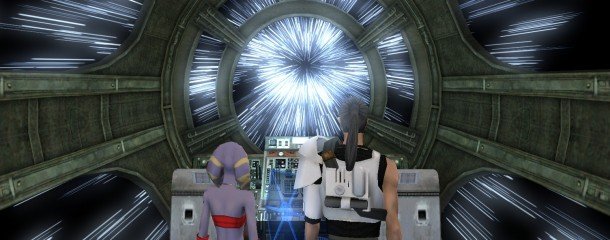
24 hours before closure, Star Wars Galaxies does something few MMOs get a chance to: declare a winner. Like the world's longest game of Battlefield, Imperial and Rebel control is assessed city by city, planet by planet. For years, players aligned to either faction have fought for this territory: now, at the end, it all boils down to a percentage.
On Starsider, the SWG server where I spent nearly three years, the breakdown is Imperials 28%, Rebels 72%.
As I log in, I receive a transmission from Mon Mothma, the redhead Rebel with a bowl cut. “The forces of freedom have finally overthrown the tyranny of the Galactic Empire,” she says, sounding a little like George W. Bush on an aircraft carrier. “Today will mark the first day of the new Galactic Republic.” It's also, for thousands of players across the world, the first day of The Old Republic.
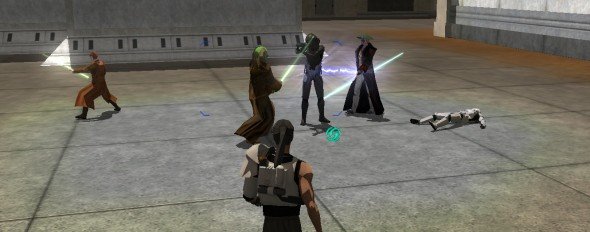
For these final hours, though, SW:TOR discussion is conspicuously absent from the streets of SWG. The focus is on enjoying the variously daft and climactic events laid on by Sony Online Entertainment, on visiting old haunts before they vanish forever, and on saying goodbye to friends.
As was ever the case with SWG, the end is defined partly by what the developers have planned and partly by what the players themselves have created. Jumping the time period forward another notch (SWG began between A New Hope and The Empire Strikes back, and crawled all the way to the Battle of Hoth over the course of its 8-year life) SOE set up a PVP battleground on the forest moon of Endor. Rebels and Imperials battle to destroy the shield generator protecting the in-construction second Death Star, clashing on the ground and in the air over a small section of jungle.
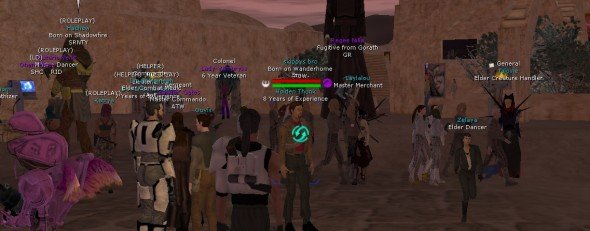
In the last few months, the SWG dev team have thrown everything at the wall. This includes the long-awaited addition of atmospheric flight, where players can take their ships from a planet's surface all the way to orbit with only a single loading screen when they reach the upper atmosphere. It's rough around the edges - the engine struggles to load in scenery fast enough, and the narrow draw distance ensconces everything in fog - but it works, and it provides the slightest glimpse at what could have been achieved if SWG's development had more focus and fewer dramatic U-turns.
Player ships jostle for space in the skies above Mos Eisley as the end approaches. Ceaseless fireworks fill the sky with lag-inducing particle effects and players run about in garish costumes, or their underwear, or both. There's dancing, and crowds of veterans giving away their rarest, most valuable gear to whoever wants to play with it. A fifty-foot-tall Jedi stands in the corner, motionless, unexplained. Players break off to scrap with the increasingly ridiculous monsters thrown at them by the developers: a super-sized reptilian Krayt dragon, and a massive spear-toting Ewok known as the Megawok.
Keep up to date with the most important stories and the best deals, as picked by the PC Gamer team.
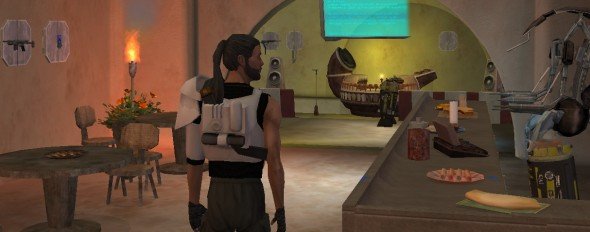
In a player-built city nearby, a member of the old guard has built a museum to the players of Starsider and their stories. Custom weapons are mounted on descriptive plaques, each describing the character who wielded them. Most of these people left the game years ago, but it's hard to wander through it without wondering at the dedication with which these memories are preserved. It's a touching and human counterpoint to the spectacle of SOE's official farewell.
The death of a player-driven MMO like SWG is different to that of a more prescriptive game. What is being lost is not just the accumulated experience and credits of thousands of players, but the cities and sculptures that the advanced object manipulation system allowed players to create. Pod-racers created from hundreds of tiny parts; a custom starport built from the ground up. Unless Sony open the game up to the community, all of these are gone forever, beyond the reach of archeology.
The defeated Empire lashes out in Coronet, the capital of Han Solo's homeworld Corellia. A to-scale Star Destroyer squats over the metropolitan skyline as players scrap (and dance, and put on hats, and spam each other) in the streets below. A few old friends and I head up in our fighters to face it, successfully whittling the monster vessel down to 50% shields before one of our X-Wings gets caught in the cross-fire and explodes dramatically. Back on the ground, the bombardment is causing everybody's frame-rates to plummet. With twenty minutes left on the clock, we decide to see the game out somewhere quieter.
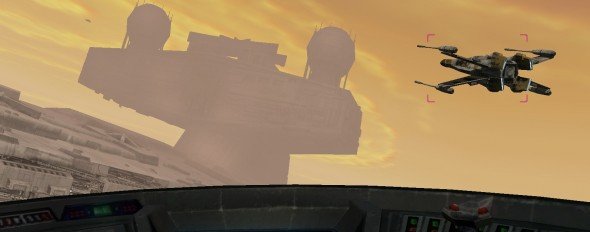
We head up in a YT-2400 freighter, a Millennium Falcon-style multiplayer vessel that can hold a whole group of players and be decorated like any other building. Slipping up through the peach-orange atmosphere of Correllia, we jump out to the space zone beyond. There, we disengage from our various stations and meet in the customised lounge. There are four of us, and our collective time with the game runs to many thousands of hours. Player-crafted space brandy is handed out, and we talk about our experiences and memories of the game. At sixty seconds to go a count-down begins, flashing across the UIs of every player still connected. We take our seats in the cockpit.
“Been fun, folks,” the pilot says. “Here we go.”
He times the hyperspace jump to coincide with the final shutdown. As the seconds tick down, the hyperdrive calculation rises to 100% complete. Autopilot kicks in, banking the ship sharply along a pre-programmed trajectory. The timer hits zero, and tiny points of light begin to streak across the windows then freeze, arrested in time. The moment hangs, the game unresponsive, one of the most iconic images in Star Wars halted before it can fully play itself out.
“You cannot connect to that Galaxy at this time. Please try again later.”
Joining in 2011, Chris made his start with PC Gamer turning beautiful trees into magazines, first as a writer and later as deputy editor. Once PCG's reluctant MMO champion , his discovery of Dota 2 in 2012 led him to much darker, stranger places. In 2015, Chris became the editor of PC Gamer Pro, overseeing our online coverage of competitive gaming and esports. He left in 2017, and can be now found making games and recording the Crate & Crowbar podcast.


